- Joined
- Oct 9, 2007
- Messages
- 47,670 (7.43/day)
- Location
- Dublin, Ireland
| System Name | RBMK-1000 |
|---|---|
| Processor | AMD Ryzen 7 5700G |
| Motherboard | Gigabyte B550 AORUS Elite V2 |
| Cooling | DeepCool Gammax L240 V2 |
| Memory | 2x 16GB DDR4-3200 |
| Video Card(s) | Galax RTX 4070 Ti EX |
| Storage | Samsung 990 1TB |
| Display(s) | BenQ 1440p 60 Hz 27-inch |
| Case | Corsair Carbide 100R |
| Audio Device(s) | ASUS SupremeFX S1220A |
| Power Supply | Cooler Master MWE Gold 650W |
| Mouse | ASUS ROG Strix Impact |
| Keyboard | Gamdias Hermes E2 |
| Software | Windows 11 Pro |
Today at the Linley Fall Processor Conference in Santa Clara, Calif., Intel revealed the first architectural details related to Tremont. Intel's newest and most advanced low-power x86 CPU architecture, Tremont offers a significant performance boost over prior generations. "Tremont is Intel's most advanced low-power x86 architecture to date. We focused on a range of modern, complex workloads, while considering networking, client, browser and battery so that we could raise performance efficiently across the board. It is a world-class CPU architecture designed for enhanced processing power in compact, low-power packages," Stephen Robinson, Intel Tremont Chief Architect.
Tremont next-generation low-power x86 microarchitecture delivers significant IPC (instructions per cycle) gains gen-over-gen compared with Intel's prior low-power x86 architectures. Designed for enhanced processing power in compact, low-power packages, Tremont-based processors will enable a new generation of innovative form factors for client devices, creative applications for the internet of things (IoT), efficient data center products and more.
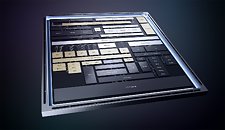

When combined with other technologies across Intel's broader IP portfolio, this architecture will enable a new generation of products. Using Intel's 3D packaging technology Foveros, Tremont is integrated within a wider set of silicon IPs in Lakefield, which will power breakthrough innovative devices like the recently announced dual-screen Microsoft Surface Neo.
Performant architectures are the foundation of chips that capture and process data. Low-power solutions are essential to enabling new use cases driven by smaller form factors.
The Details: Intel Tremont includes several advancements in ISA (instruction set architecture), microarchitecture, security and power management. It delivers significant IPC gains gen-over-gen as compared with Intel's prior low-power x86 architectures, making it a first-class offering for powering a new generation of Intel products across client, IoT and data center offerings. Tremont's unique 6-wide (2x3-wide clustered) out-of-order decoder in the front end allows for a more efficient feed to the wider back end, which is fundamental for performance.
For more complete information about performance and benchmark results, visit Intel's Performance Benchmark page.
The presentation follows.
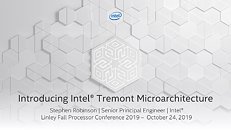
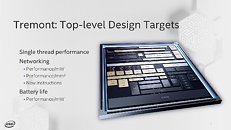
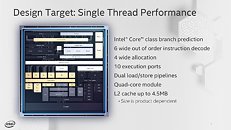

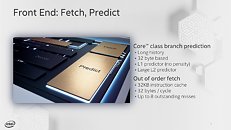
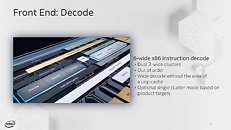

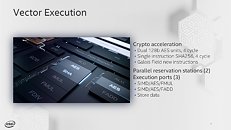
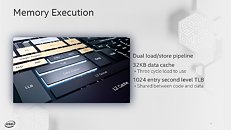
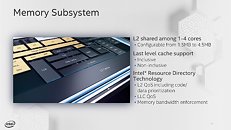
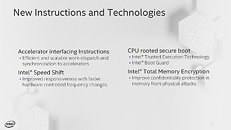
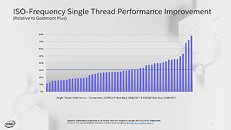
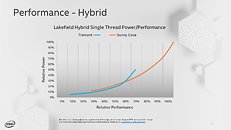

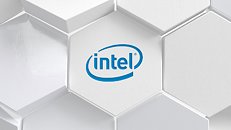

View at TechPowerUp Main Site
Tremont next-generation low-power x86 microarchitecture delivers significant IPC (instructions per cycle) gains gen-over-gen compared with Intel's prior low-power x86 architectures. Designed for enhanced processing power in compact, low-power packages, Tremont-based processors will enable a new generation of innovative form factors for client devices, creative applications for the internet of things (IoT), efficient data center products and more.


When combined with other technologies across Intel's broader IP portfolio, this architecture will enable a new generation of products. Using Intel's 3D packaging technology Foveros, Tremont is integrated within a wider set of silicon IPs in Lakefield, which will power breakthrough innovative devices like the recently announced dual-screen Microsoft Surface Neo.
Performant architectures are the foundation of chips that capture and process data. Low-power solutions are essential to enabling new use cases driven by smaller form factors.
The Details: Intel Tremont includes several advancements in ISA (instruction set architecture), microarchitecture, security and power management. It delivers significant IPC gains gen-over-gen as compared with Intel's prior low-power x86 architectures, making it a first-class offering for powering a new generation of Intel products across client, IoT and data center offerings. Tremont's unique 6-wide (2x3-wide clustered) out-of-order decoder in the front end allows for a more efficient feed to the wider back end, which is fundamental for performance.
For more complete information about performance and benchmark results, visit Intel's Performance Benchmark page.
The presentation follows.
















View at TechPowerUp Main Site





